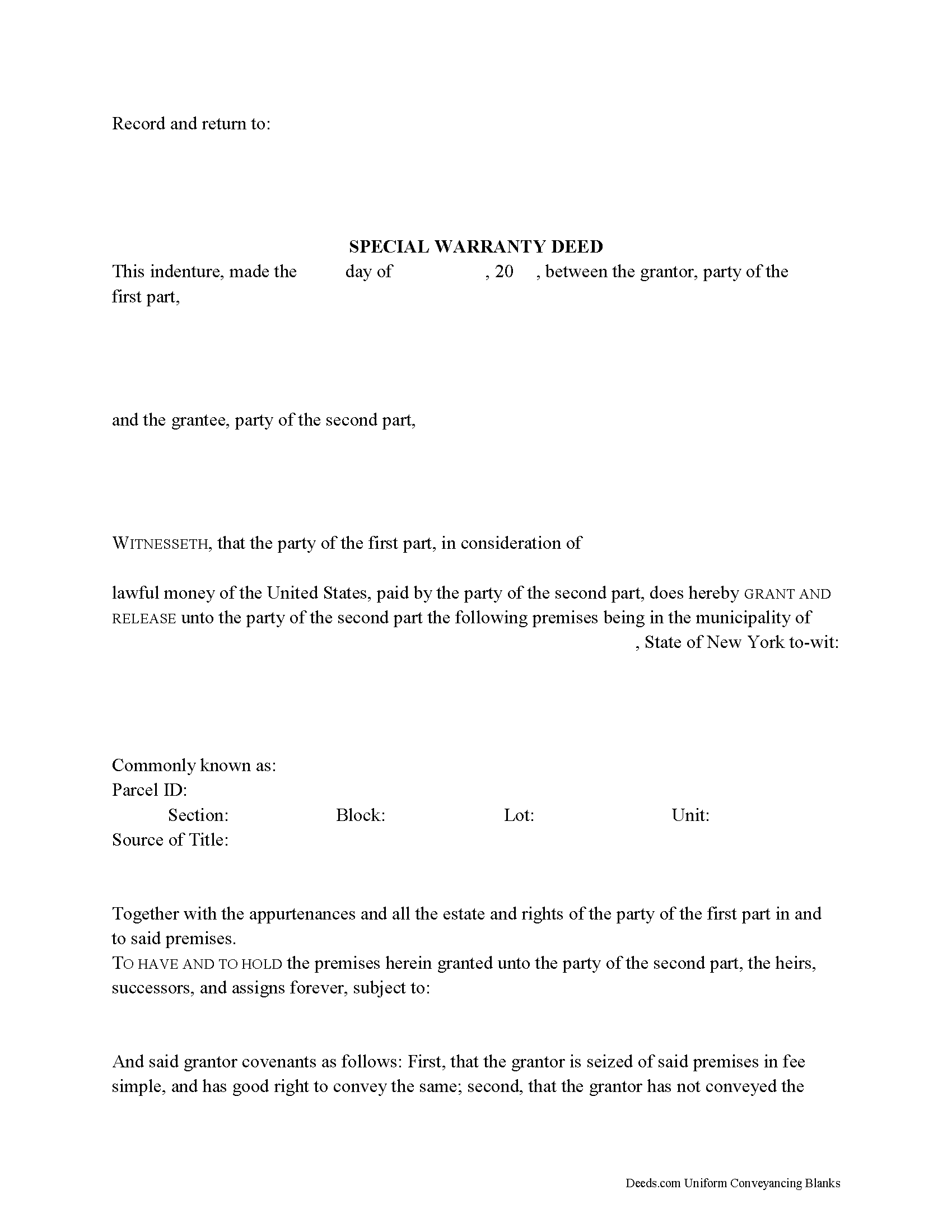Download New York Special Warranty Deed Legal Forms

New York Special Warranty Deed Overview

In New York, interest to real property can be transferred from one party to another by executing a special warranty deed. Special warranty deeds convey an interest in real property to the named grantee with limited warranties of title, but they are not statutory forms in New York.
Special warranty deeds contain covenants that the grantor holds title to the property and has good right to convey it; that the grantor has not conveyed the property to another party; that the property is free from encumbrances that arose during the time that the grantor held title to the property (with the exception of any noted in the deed); and that the grantor will defend the title against anyone who may lawfully claim the same by, through, or under them. These covenants should be explicit in the instrument of conveyance. Basically, a special warranty deed guarantees the title against defects arising only during the period the grantor holds title, and does not extend to the property's entire ownership history.
A lawful special warranty deed meets all state and local standards for recorded documents, including the grantor's full name, mailing address, and marital status; the consideration given for the transfer; and the grantee's full name, mailing address, marital status, and vesting. Vesting describes how the grantee holds title to the property. Generally, real property is owned in either sole ownership or in co-ownership.
For New York residential property, the primary methods for holding title are tenancy in common, joint tenancy, and tenancy by entirety. A grant of ownership of real estate to two or more unmarried persons is presumed to create a tenancy in common, unless a joint tenancy is expressly declared. In the case of married persons, a tenancy by entirety is presumed, unless a joint tenancy or tenancy in common is expressly declared (E.P.T. Law Sections 6-2.1, 6-2.2).
As with any conveyance of realty, a special warranty deed requires a complete legal description of the parcel, including the section, block, lot, and unit numbers. Recite the prior deed reference to maintain a clear chain of title, and detail any restrictions associated with the property.
Sign the deed in the presence of a notary public or other authorized official, then record it at the county clerk's office in the county where the property is located for a valid transfer. Contact the same office to confirm accepted forms of payment. Most counties in New York require a recording page to accompany all documents for recording. This cover page is available on the local county clerk's website, and it factors into the total page count when calculating recording fees.
In New York, the real estate transfer tax is due at the time of recording. File Form TP-584 (Combined Real Estate Transfer Tax Return) with the appropriate county clerk (TAX Law 31-D-1449-EE(2)(d)). Non-residents of New York State must also file an IT-266 Tax Form (Non-Resident Real Property Estimated Income Tax Payment Form) (TAX Law 22-663).
Pursuant to R.P.P. Law 9-333.3, all conveyances, excluding deeds of oil and gas or mineral rights, require a Real Property Transfer Report. Use Form RP-5217-NYC for real property transfers within the five boroughs of New York City, and use Form RP-5217 for real property transfers in all other counties. Contact the local county clerk's office to confirm the specific local requirements.
This article is provided for informational purposes only and is not a substitute for legal advice. Speak to an attorney with questions related to special warranty deeds or for any other issues related to transfers of real property in New York.
(New York SWD Package includes form, guidelines, and completed example)